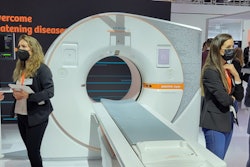Dear AuntMinnie Member,
Although portable, low-field-strength MRI scanners offer much potential for enabling neuroimaging in a point-of-care setting, these systems are often limited by low spatial resolution and a low signal-to-noise ratio. Artificial intelligence (AI) may be able to help change that, however.
Our highest-viewed story this week shares how a deep-learning model can generate synthetic "super-resolution" brain MR images from portable scanners. The researchers believe their approach would enable automated quantitative morphometry to be performed on these low-field systems.
In other MRI news, the modality has shown that racial disparities in cerebrovascular disease begin to manifest in midlife, especially among people of color, according to a recent study.
You can access this article and other MRI stories in our MRI Community,
Dual-energy spectral CT
Hospital CT departments have many priorities right now, including improving patient satisfaction with their CT experience. But when it comes to buying new equipment, they are increasingly drawn to dual-energy spectral CT scanners, according to a new report from AuntMinnie.com's sister company IMV Medical Information Division.
What else did the IMV survey find? Read our article for more details.
Meanwhile, researchers from Canada recently compared lung CT findings between marijuana smokers, tobacco-only smokers, and nonsmokers. Although they weren't able to conclusively identify an association between marijuana smoking and emphysema or bullous disease, the group did find that airway inflammation and emphysema were more common in marijuana smokers.
You can delve further into their results by stopping by our CT Community.
Road to RSNA
RSNA 2022 is only one week away, and our Road to RSNA preview section is in full swing. So far we've posted previews of Artificial Intelligence, Women's Imaging, Digital X-Ray, and MRI. Next week, we'll take a look at what attendees can expect for Ultrasound, Molecular Imaging, CT, and Imaging Informatics.




















